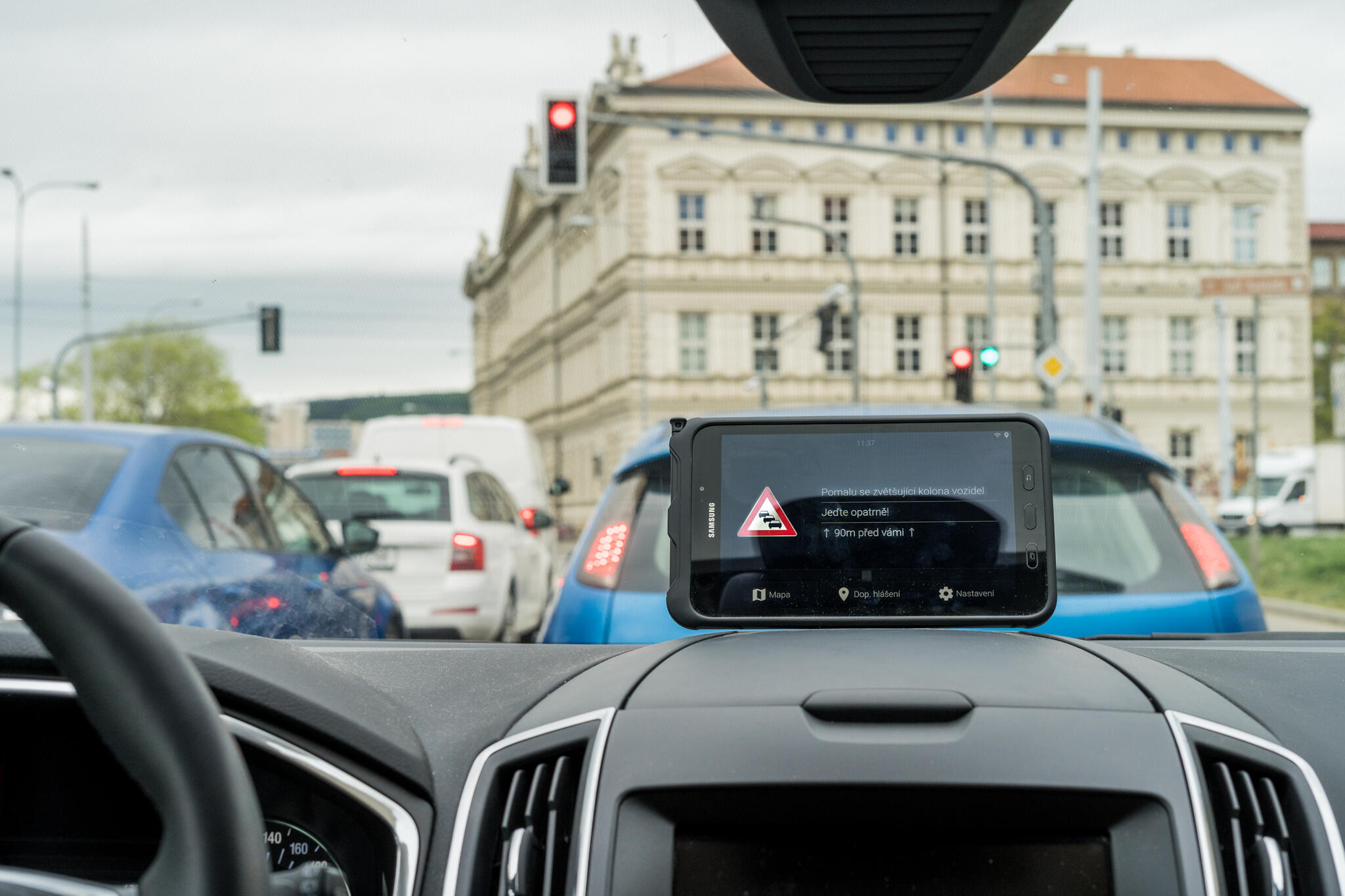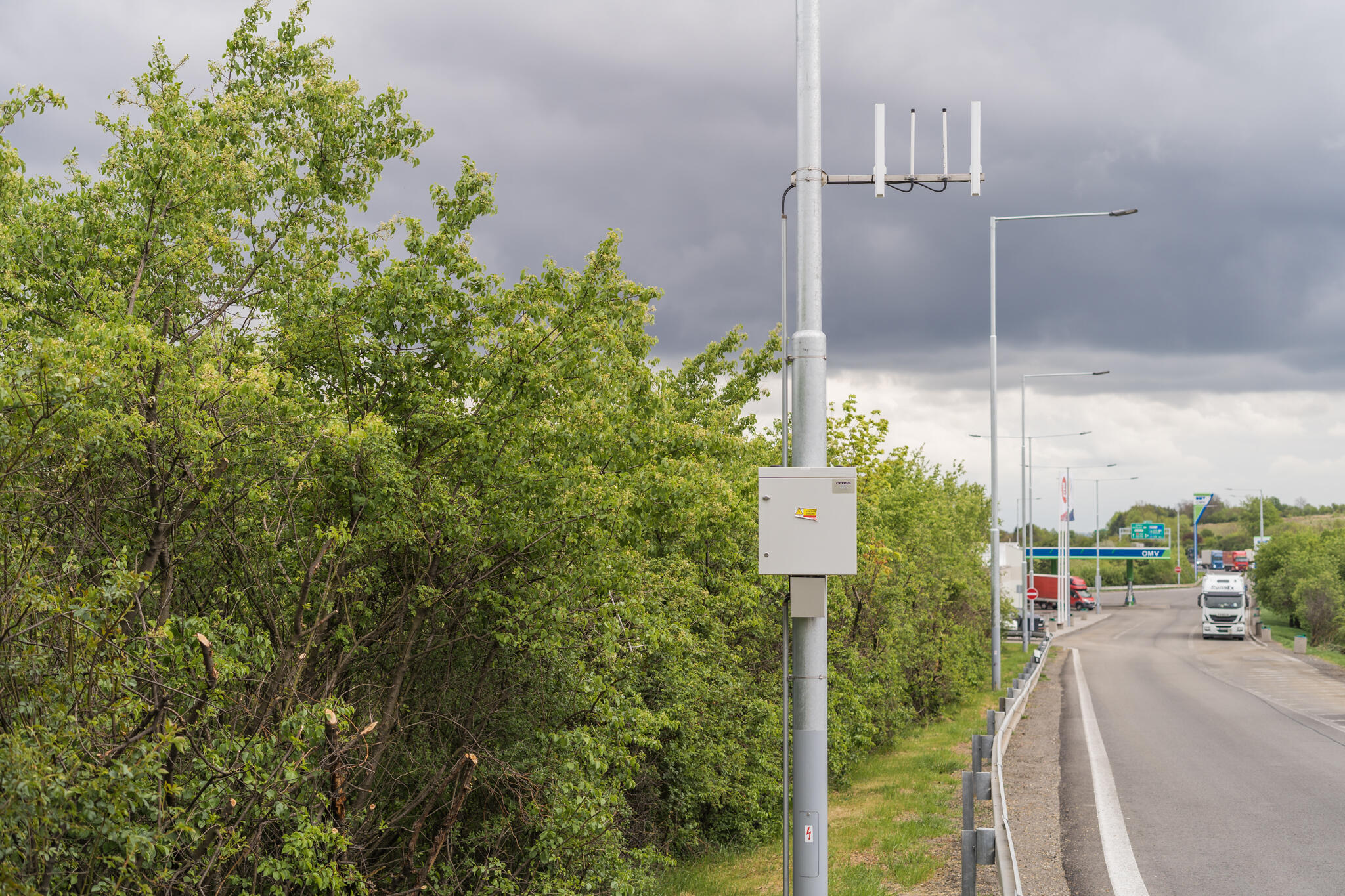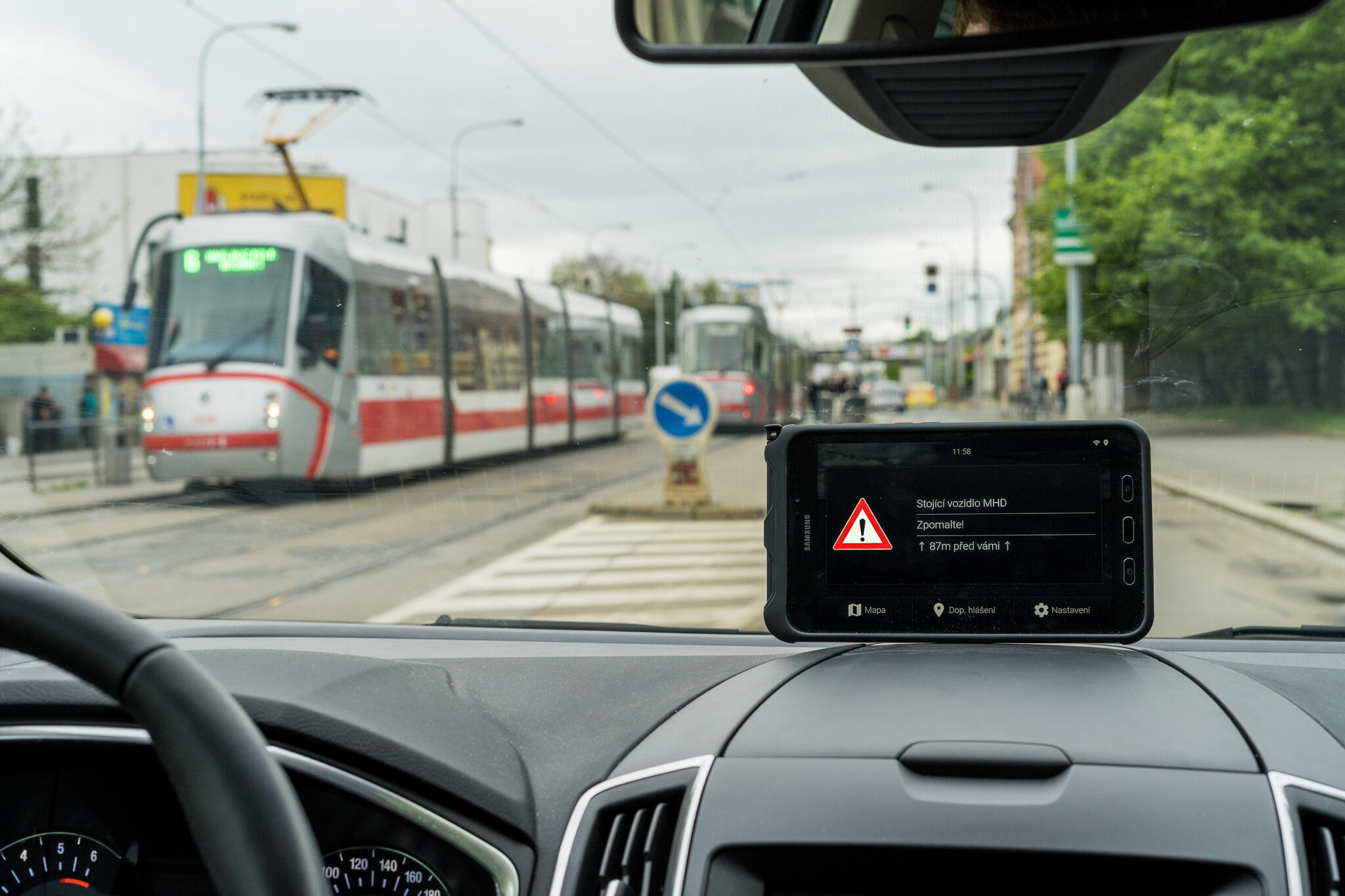Case study - V2X in Brno
What is it like when cars can communicate with each other? How is this data used by smart traffic lights, and how do they simplify city transit or reduce waiting in queues? How do modern transport systems work? These questions are answered by the C-ROADS project. We supplied the technology for its latest implementation in Brno.

The system where cars communicate on the road and their data continue to use traffic lights and other transport units is called cooperative technologies. How do they work? Road traffic data, smart traffic lights and vehicle communication systems make it possible to control traffic remotely, so that IRS vehicles can be easily driven through city streets, giving priority to public transport at junctions or avoiding road and junction congestion. In addition, the system can alert the driver to cars that are driving through a red light, skidded on a slippery road, or standing on a highway in a queue. The driver will be alerted directly to the on-board unit well away from the incident.
Smart cars already exist, but we haven´t been able to use them so far
An increasing number of cars equipped with cooperative technologies are making them think about how to use this data to improve traffic in cities, roads and highways. The C-ROADS project is on the European scale in the implementation phase and the Czech Republic is currently the furthest thanks to Cross Zlín. We cooperated on two projects - DT1 and DT2, both of which are linked to the Brno locality, in the first case on the highway and in the second directly in the city.
“Both DT1 and DT2 are linked by the same technology. However, both are different in terms of the use of individual systems and procedures, which are logically different on the highway and different in the city. As far as I know, there is no place in Europe today where this technology is now used on the same scale as it is in Brno, ”says Ivo Gajdošík, Chief Projet Officer.
In addition to cutting edge technologies, the project also requires a deep network of local road managers. The Brno Project is a unique cooperation between Brno Communications, Brno Public Transport Company, IRS of the South Moravian Region and Directorate of Roads and Motorways CR. All data, which cooperative systems work with, are combined in central systems, whether the technical dispatching of Brno Communications or Directorate of Roads and Motorways CR. Moreover, they are interconnected for the transmission of information. The dispatchers thus have a great overview of the current state of roads and highways in Brno, the situation in the Brno tunnels and the traffic signaling throughout the city.
Systems collect data at intersections and in vehicles
Directly in the city, data is collected by Road Side Unite (RSU) units, which are located at selected intersections of the main Brno ring road. They also monitor the situation on motorways in the vicinity of Brno. On-road monitoring is also monitored by the On Board Unite (OBU / RVU) on-board units that we installed in the vehicles of the Brno Road Administration and Maintenance Center. These units alert the driver in a timely manner about highway maintenance, lane restrictions, or other situations that may present a potential hazard.
Both projects of the cooperative systems are at the moment mainly preparing for big testing, which is planned for the next year in cooperation with car factories. The one in Brno, which is unprecedented in Europe, is unique due to the wide range of testing possibilities. Car factories already have some models equipped with cooperative units, but due to the lack of real testing infrastructure, the SW units have not been functional yet. Testing in the city of Brno should change this situation. Moreover, it is another pre-stage for real use of autonomous vehicles.




